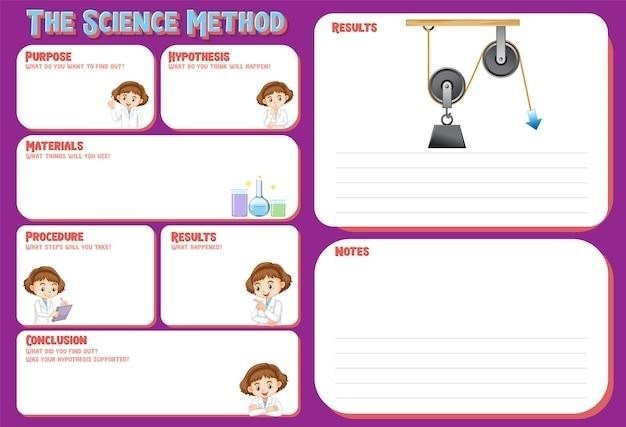Affordable Guided Hunts⁚ A Comprehensive Guide
Discover cost-effective guided hunting adventures. This guide explores various options, from whitetail deer to big game, offering tips to save money and find reputable outfitters for memorable hunts within your budget. Explore popular destinations and hunting packages.
Finding Affordable Hunting Packages
Securing affordable guided hunts requires strategic planning. Explore online platforms like BookYourHunt, comparing prices and reviews from various outfitters. Look for package deals that bundle lodging, meals, and guiding services. Consider hunts during the off-season or shorter hunts to reduce costs. Many outfitters offer flexible options; some may even provide discounts for group bookings. Remember to factor in licensing fees and travel expenses when comparing overall costs. Carefully review what each package includes to avoid hidden fees. Don’t hesitate to contact outfitters directly to negotiate prices, especially for hunts outside peak season.
Choosing the Right Outfitter
Selecting a reputable and affordable outfitter is crucial for a successful hunt. Thoroughly research potential outfitters, checking online reviews and testimonials on sites like Guidefitter. Look for outfitters with a proven track record of success and positive client experiences. Inquire about their hunting practices and ethical standards. Confirm licensing and insurance details. Consider the level of experience and expertise offered by the guides. Compare the services included in their packages—some may offer additional perks like meals or transportation. Communication is key; choose an outfitter who responds promptly to your inquiries and addresses your concerns. A good outfitter will work with you to create a hunting experience that aligns with your budget and expectations. Don’t be afraid to ask questions before committing to a hunt.
Factors Affecting Hunt Cost
Several factors significantly influence the overall cost of a guided hunt. The type of animal you’re hunting plays a major role; big game hunts like elk or moose are generally more expensive than smaller game hunts. The location of the hunt also affects the price. Hunts in remote areas or those requiring extensive travel often cost more. The duration of the hunt is another key factor; longer hunts naturally increase expenses. The level of service provided by the outfitter impacts cost; fully guided hunts with high-end lodging will be pricier than more basic options. The time of year can also influence costs; peak hunting seasons tend to command higher prices. Finally, consider any additional costs like licenses, tags, and transportation to and from the hunting location. Carefully assess these factors to determine a budget that aligns with your chosen hunt.
Popular Affordable Hunting Destinations
Several locations offer affordable guided hunts. Texas is known for its accessible whitetail deer hunts, often providing excellent value for the price. Idaho presents opportunities for elk hunting at relatively reasonable costs, especially during certain seasons. Kansas offers attractive whitetail deer hunting options, and Nebraska provides affordable turkey hunting experiences. For those seeking a broader range, consider states like Wyoming for antelope and South Dakota for mule deer, both offering potentially cost-effective hunts depending on the outfitter and time of year. Remember that prices fluctuate based on the hunting season and specific species targeted. Research thoroughly and compare outfitters to secure the best value for your chosen location.
Hunting Specific Animals on a Budget
Targeting specific animals can significantly impact the cost of your guided hunt. Whitetail deer hunts are frequently among the most budget-friendly options, particularly in states like Texas and Kansas, where ample opportunities exist. Predator hunting, focusing on coyotes or feral hogs, often presents lower costs than big game hunts. While big game like elk and mule deer can be more expensive, seeking hunts in less popular locations or during off-seasons can help reduce costs. Bear hunts can vary widely in price depending on location and the type of bear. For affordable big game, explore options in states like Idaho, known for potentially lower-priced elk hunts. Always compare prices and package deals from multiple outfitters to find the best value for your chosen animal.
Types of Affordable Guided Hunts
Explore diverse hunting experiences! Options range from whitetail deer and predator hunts (coyotes, hogs) to big game (elk, mule deer) and bear hunts, each offering varying price points and challenges.
Whitetail Deer Hunts
Whitetail deer hunts are a popular and often affordable entry point into guided hunting. Numerous outfitters across the US offer various packages, catering to different budgets and experience levels. Texas is frequently cited as a location with accessible whitetail hunting opportunities. Many packages include lodging, meals, and guiding services, simplifying the overall cost. Consider factors like hunt duration, location (public vs. private land), and the type of hunt (rifle, archery, muzzleloader) when comparing prices. Remember to factor in licensing fees and travel expenses when budgeting for your whitetail deer hunt. Researching outfitters carefully and comparing packages is key to securing an affordable yet fulfilling experience. Don’t hesitate to ask questions about included services and potential additional costs to avoid surprises. With careful planning, a memorable whitetail deer hunt can be achieved without breaking the bank. Look for off-season deals or shorter hunts to further reduce expenses.
Predator Hunts (Coyote, Hog)
Predator hunts, targeting coyotes and feral hogs, often present more budget-friendly options compared to big game hunts. These hunts frequently take place on private ranches or public lands, impacting cost. Guided hunts often utilize calling techniques and strategic placement to increase success rates. The affordability is partly due to the abundance of these animals in many regions and the less intensive logistical requirements compared to larger game. Many outfitters offer day hunts or shorter trips for coyotes and hogs, which can significantly reduce costs. Consider the type of weapon you’ll be using (rifle, bow, etc.), as this can affect both the cost and the overall hunting experience. Online platforms and hunting forums can be valuable resources for finding affordable predator hunts. Remember to factor in travel, lodging (if applicable), ammunition, and licensing fees when budgeting for your predator hunt. Research thoroughly to find an outfitter that aligns with your hunting style and budget.
Big Game Hunts (Elk, Mule Deer)
While elk and mule deer hunts are generally considered more expensive than predator hunts, affordable options exist. Hunting during the off-season or opting for shorter hunts can significantly reduce costs. Consider states with more affordable licensing fees and less restrictive regulations. Look for outfitters offering package deals that include lodging and meals. DIY elements, such as packing your own food and utilizing your own gear, can further lower expenses. Public land hunts, while requiring more self-sufficiency, are usually less costly than private land hunts. Research different hunting areas within your budget. Some states offer drawing systems for hunting permits which can provide affordable opportunities. Remember to thoroughly research the reputation of outfitters and compare prices before committing. Carefully consider the level of guiding you require, as this directly impacts the overall cost. A semi-guided hunt, where you have some level of independence, might be a cost-effective alternative to a fully guided hunt.
Bear Hunts
Affordable bear hunts are achievable with careful planning. Consider states like Idaho, known for offering over-the-counter tags, reducing permit costs. Opting for a shorter hunt duration minimizes expenses related to lodging and guiding fees. Public land hunts, while requiring more self-reliance in locating bears, significantly lower costs compared to private land hunts. Focus your search on hunts offering less intensive guiding services, such as drop-camp hunts, where you’re provided with a base camp but handle a larger portion of the hunting independently. Research and compare prices from various outfitters. Check for package deals that might bundle lodging and meals, potentially reducing overall costs. Remember to factor in travel costs and necessary equipment, as these can substantially affect the budget. Thoroughly vet the experience and reputation of any outfitter before making a commitment. Safety should always be a top priority when considering a bear hunt, so choose an outfitter with a strong safety record and experienced guides.

Tips for Saving Money on Guided Hunts
Hunt during the off-season, choose shorter hunts, utilize package deals, and consider DIY elements like transportation or food preparation to significantly reduce costs.
Hunting During the Off-Season
Consider hunting during the off-season to significantly reduce costs. Peak hunting seasons command higher prices due to increased demand. By hunting during the shoulder seasons (periods before and after the peak season), you’ll often find lower prices on guided hunts and potentially better availability. Outfitters may offer discounts to fill their schedules during these less popular times. While weather conditions might be slightly less ideal, the savings can be substantial, allowing you to experience a guided hunt without breaking the bank. Remember to research the specific species you’re targeting and the weather conditions typical for the off-season in your chosen location to ensure a safe and successful hunt. The trade-off of potentially less-than-perfect weather is frequently outweighed by the significant cost savings.
Choosing Shorter Hunts
Opting for shorter guided hunts can dramatically reduce your overall expenses. Extended hunts typically involve higher costs for lodging, meals, guide services, and licenses. A shorter hunt, perhaps a 2-day trip instead of a 5-day excursion, significantly cuts down on these cumulative expenses. While you might harvest fewer animals, the reduced duration translates to considerable savings. This approach is particularly appealing to budget-conscious hunters or those new to guided hunts, allowing them to gain experience without a substantial financial commitment. Carefully consider your hunting goals and the time commitment you’re comfortable with before deciding on the ideal length for your affordable guided hunting adventure. Many outfitters offer flexible trip durations to cater to various budgets and preferences.
Utilizing Package Deals
Many outfitters offer comprehensive hunting packages that bundle various services at a discounted rate compared to booking them individually. These packages often include lodging, meals, guiding fees, and sometimes even license and tag costs. By opting for a package deal, you can avoid the hassle of arranging these elements separately and potentially save a significant amount of money. Look for packages that align with your specific hunting needs and budget. Some outfitters provide different package tiers, offering varying levels of accommodation and services to suit a range of budgets. Before committing, carefully review what’s included in the package to ensure it meets your expectations and offers the best value for your money. Comparing multiple package offers from different outfitters can also help you find the most cost-effective option.
DIY Elements to Reduce Costs
While a guided hunt offers convenience and expertise, incorporating DIY elements can significantly lower expenses. Consider preparing some of your own meals instead of relying entirely on the outfitter’s catering. Packing your own lunches and snacks can save considerable money over the course of a multi-day hunt. Similarly, if you’re comfortable with basic field dressing and meat processing, you might choose to handle those tasks yourself, potentially reducing costs associated with those services. Researching and obtaining your own licenses and permits in advance can also save on potential processing fees charged by the outfitter. By strategically incorporating these DIY aspects, you can maintain the core experience of a guided hunt while actively managing your expenses and making your hunting trip more affordable.

Resources for Finding Affordable Hunts
Discover budget-friendly hunting opportunities through online platforms, outfitter websites, and hunting communities. These resources offer diverse options and price comparisons for your next affordable guided hunt.
Online Booking Platforms
Numerous online platforms specialize in connecting hunters with outfitters offering affordable guided hunts. These websites often feature detailed listings, including descriptions of hunts, prices, and customer reviews. Many platforms allow for easy comparison shopping, enabling you to find the best deals. Some platforms even offer exclusive discounts or packages, further enhancing your chances of securing an affordable guided hunt. Remember to check reviews and compare offers before booking to ensure a satisfactory experience. Using these platforms can streamline your search, saving you valuable time and effort in finding the perfect hunting trip within your budget.
Outfitter Websites and Directories
Directly contacting outfitters through their websites or utilizing online directories dedicated to hunting can be highly effective in finding affordable guided hunts. Many outfitters maintain their own websites, showcasing the hunts they offer, including pricing and detailed information about the services provided. Online directories often aggregate listings from numerous outfitters, providing a centralized resource for comparing options. These resources allow for direct communication with outfitters, enabling you to negotiate prices or inquire about potential discounts. Thoroughly reviewing outfitters’ websites and online profiles will help you identify those providing quality hunts at competitive rates. Remember to check for customer reviews and testimonials before committing to a specific outfitter.
Hunting Forums and Communities
Engaging with online hunting forums and communities can be invaluable when searching for affordable guided hunts. These platforms often feature discussions among hunters who share experiences, recommendations, and insights on various outfitters and hunting locations. Participants frequently exchange information about cost-effective options, including deals and discounts that might not be widely advertised. By actively participating in these communities, you can tap into a wealth of collective knowledge from seasoned hunters. This peer-to-peer exchange of information can significantly aid your search for budget-friendly guided hunts, saving you time and money. Remember to verify information obtained from forums with independent research.


















